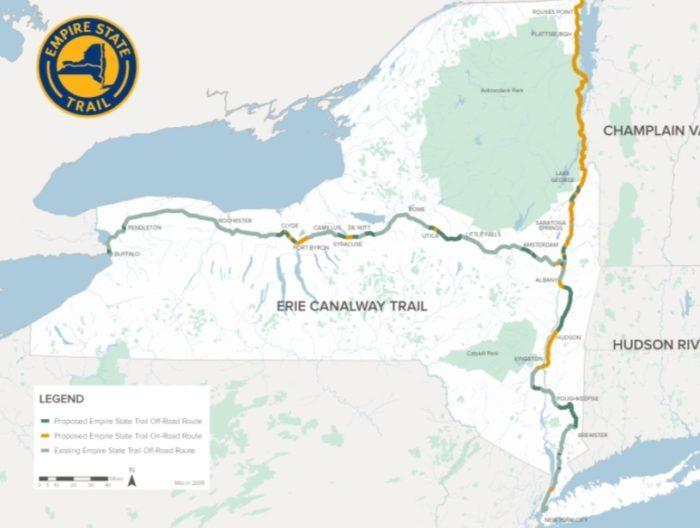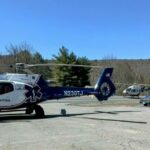ALBANY – The Empire State Trail, the nation’s longest multi-use state trail, is now fully open on December 31.
The trail spans 750-miles total, 75 percent of which is off-road trails ideal for cyclists, hikers, runners, cross-country skiers and snow-shoers. The new recreational trail, which runs from New York City through the Hudson and Champlain Valleys to Canada, and from Albany to Buffalo along the Erie Canal, will provide a safe and scenic pathway for New Yorkers and tourists to experience New York State’s varied landscapes. The Empire State Trail is expected to draw 8.6 million residents and tourists annually.
“During this unprecedented year, the Empire State Trail has been a lifeline for many, as local residents explored recreational opportunities in their backyards while remaining safe during a global health pandemic,” Lieutenant Governor Kathy Hochul said. “The completion of the 750-mile state trail not only makes physical connections between locations across the state, but it also continues to build on how we are reimagining our natural wonders and historic corridors as a source of recreation, economic development and tourism in New York State.”
Recently completed projects in the Hudson Valley that finalize the trail include:
- Albany-Hudson Electric Trail: The Hudson River Valley Greenway constructed 36 miles of off-road and on-road trails from the city of Rensselaer to the City of Hudson in Rensselaer and Columbia counties. The $45 million trail follows the historic route of an electric trolley that operated from 1900 to 1929. The corridor is owned by National Grid, which authorized the state to build a trail on the route.
- Maybrook Trailway: Metro-North Railroad constructed a new 23-mile rail-trail on its inactive “Beacon Line” corridor from Hopewell Junction in Dutchess County to Brewster in Putnam County passing through the towns of Pawling, Southeast, Paterson, Beekman and East Fishkill. Along the route, the trail winds through rural landscapes and wooded areas featuring seasonal waterfalls and crosses the Appalachian Trail. The $42 million Beacon Line was the first all-rail freight connection across the Hudson River north of New York City. It originally opened as a rail line in 1892 and served as a vital transportation link between New York and southern New England, carrying trains between Derby Junction and Maybrook, via the bridge over the Hudson River at Poughkeepsie that is now the Walkway Over the Hudson.
- Hudson River Brickyard Trail: The City of Kingston constructed a new 1.5-mile Empire State Trail section along the Hudson River shoreline. The $1.4 million project was built with City of Kingston and Town of Ulster funds matched by state grants from the Department of State and Hudson River Valley Greenway.
The State Department of Transportation improved 170 miles of on-road bicycle route sections to enhance safety and travel on low-speed rural roadways and city streets when possible. The state also installed 45 gateways and trailheads along the route to welcome visitors and branded the trail with signage, interpretive panels, bike racks, and benches.








